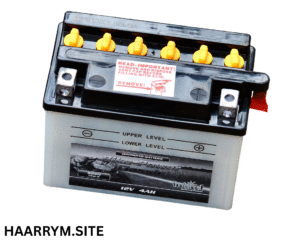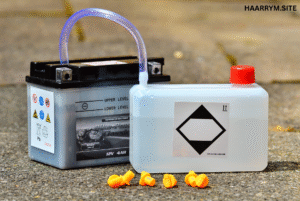The worldwide turn towards renewable energy has gained the stage in recent years. Solar power is among the best candidates in the green energy revolution. More homes, companies, and off-grid explorers are investigating the advantages of a solar panel kit with battery and inverter as power prices keep rising and environmental consciousness develops.
These kits provide an all-in-one approach to effectively harvest solar energy whether your goals are to lower your electricity costs, be ready for an emergency, run a distant cabin or RV. We will go over in this all-inclusive tutorial what a solar panel kit with battery and inverter comprises, how it operates, its advantages, and how to choose the correct one for your circumstances.
What Is a Solar Panel Kit with Battery and Inverter?
A solar panel kit with battery and inverter is a complete energy system that allows you to generate, store, and use solar energy. It’s designed for ease of installation and includes three main components:
-
Solar Panels: Capture sunlight and convert it into direct current (DC) electricity.
-
Battery (or Battery Bank): Stores excess energy for use during nighttime or cloudy days.
-
Inverter: Converts the stored DC electricity into alternating current (AC), which is used by most home appliances.
These kits can be used in both on-grid and off-grid scenarios. Some are designed to integrate with the main power grid, offering backup power, while others provide complete independence from traditional electricity sources.
Why Choose a Solar Panel Kit with Battery and Inverter?
Here are the top reasons why more people are investing in these all-in-one solar systems:
1. Energy Independence
With a solar panel kit that includes a battery and inverter, you’re not just generating your own electricity — you’re also storing it for later use. That means you’re protected during power outages or in remote areas with no grid access.
2. Lower Electricity Bills
One of the most appealing benefits is the potential to reduce or even eliminate your electric bills. During the day, solar panels generate power that you can use instantly. Any excess gets stored in the battery for nighttime use.
3. Environmentally Friendly
Solar power is clean, renewable, and produces zero emissions. Using a solar kit with battery storage helps reduce your carbon footprint and reliance on fossil fuels.
4. Easy Installation
Modern kits are designed to be user-friendly, often including plug-and-play systems with clear instructions. Many people choose DIY installation for smaller systems, while larger setups may require professional assistance.
5. Portability and Flexibility
From rooftop installations to portable kits for camping or RV travel, these systems come in a variety of sizes and configurations to fit your lifestyle.
Components of a Solar Panel Kit with Battery and Inverter
To better understand how these kits work, let’s break down the essential components.
1. Solar Panels
-
Monocrystalline panels: High efficiency, sleek design.
-
Polycrystalline panels: Slightly less efficient but more affordable.
-
Wattage: Kits vary widely, from 100W for portable systems to over 5000W for homes.
2. Battery or Battery Bank
-
Lithium-ion batteries: Lightweight, long-lasting, and efficient. Ideal for modern setups.
-
Lead-acid batteries: More affordable but heavier and less efficient.
-
Capacity: Measured in amp-hours (Ah) or kilowatt-hours (kWh). Larger capacities store more energy.
3. Inverter
-
Pure sine wave inverters: Clean power ideal for sensitive electronics.
-
Modified sine wave inverters: Less expensive, but not suitable for all devices.
-
Size: Rated in watts. Make sure it can handle your peak power demand.
4. Charge Controller
This is often included in solar kits and protects the battery from overcharging. It ensures that your system operates safely and efficiently.
How Does a Solar Panel Kit Work?
Here’s a simplified breakdown of how these kits operate:
-
Daytime: Solar panels capture sunlight and convert it to DC electricity.
-
Charging: This electricity is sent through a charge controller and stored in the battery.
-
Usage: The inverter converts the stored DC electricity into AC power for your appliances.
-
Night or Cloudy Weather: Stored energy from the battery keeps your lights on and devices running.
Types of Solar Panel Kits with Battery and Inverter
Depending on your needs, you can choose from various configurations:
1. Off-Grid Solar Kits
Perfect for cabins, RVs, boats, or remote areas. These kits are designed for complete independence from the power grid.
2. Grid-Tied with Battery Backup
Allows you to stay connected to the grid but also stores energy for emergencies. Great for homes wanting both savings and reliability.
3. Portable Solar Kits
Ideal for camping, tailgating, or van life. These lightweight kits include foldable panels, compact batteries, and built-in inverters.
4. Hybrid Solar Kits
Combines the best of both worlds — allows you to use solar, store energy, and draw from the grid when needed. Flexible and future-proof.
Applications of a Solar Panel Kit with Battery and Inverter
These kits have a wide range of practical uses:
-
Residential homes: Reduce bills and prepare for outages.
-
RVs and motorhomes: Stay powered off-grid while traveling.
-
Cabins or tiny homes: Affordable energy independence.
-
Outdoor events: Power speakers, lights, and devices.
-
Emergency preparedness: Keep essential appliances running during disasters.
Top Benefits by Category
| Category | Benefit |
|---|---|
| Cost | Save money long-term, reduce utility dependency |
| Convenience | Easy setup, portable options available |
| Eco-Friendly | Clean, renewable energy with zero emissions |
| Reliable | Store power for use anytime, anywhere |
| Scalability | Add more panels or batteries as needed |
How to Choose the Right Solar Panel Kit with Battery and Inverter
Before buying, consider the following factors:
1. Power Needs
Estimate your daily power usage. Add up the wattage of appliances you want to run and how many hours they operate. This will help you choose the right panel size and battery capacity.
2. Installation Type
Will the kit be mounted on your home, set up on your RV, or used on the ground? Make sure the kit supports your preferred setup.
3. Battery Capacity
Look for kits with sufficient battery storage to cover your energy needs, especially if you’re in an area with limited sunlight.
4. Inverter Size
Ensure the inverter can handle your peak power demands. For example, starting a refrigerator may require more power than its running wattage.
5. Weather Resistance
If you’re installing outdoors or taking it on the road, make sure the components are waterproof and durable.
Popular Solar Panel Kits with Battery and Inverter
Here are a few top-rated kits that consistently receive positive reviews:
1. Jackery Solar Generator 2000 Plus
-
Includes portable panels and high-capacity lithium battery.
-
Ideal for RVs and camping.
-
Quiet, efficient, and easy to use.
2. Renogy 400W Off-Grid Solar Kit
-
Perfect for cabins or small homes.
-
Comes with MPPT charge controller and pure sine wave inverter.
-
Scalable design.
3. EcoFlow Delta Pro
-
Powerful battery backup for home.
-
Integrates well with solar panels.
-
Smart app control.
Pro Tip: Always check if the kit includes cables, mounting hardware, and instructions to avoid extra purchases.
Government Incentives and Solar Rebates
Many regions offer tax credits, rebates, and incentives to reduce the cost of solar systems. In the U.S., the Federal Solar Investment Tax Credit (ITC) offers up to 30% back on qualifying purchases. Check with your local authorities for updated programs.
Installation Tips
-
Read the manual carefully before installation.
-
Mount panels at the correct angle to maximize sun exposure.
-
Use proper fuses and circuit breakers for safety.
-
Label connections clearly if you’re doing a DIY setup.
-
When in doubt, hire a licensed electrician for professional installation.
FAQs
1. Can I run my entire house on a solar panel kit with battery and inverter?
Yes, but it depends on the system size. Larger kits with multiple panels and high-capacity batteries can power an entire home.
2. How long does a solar battery last?
Most lithium batteries last 10–15 years, depending on usage and maintenance.
3. Is it worth getting a kit instead of buying components separately?
Absolutely. Kits are often more affordable and ensure compatibility between components.
4. What happens on cloudy days?
Solar panels still produce power, just less. The battery kicks in when solar generation is low.
5. Can I add more panels or batteries later?
Yes! Most modern systems are modular, allowing you to expand as needed.
Final Thoughts
More than simply a wise purchase, a solar panel package with battery and inverter is a step towards energy independence, sustainability, and peace of mind. These packages provide unparalleled versatility and value whether your needs are distant travel, emergency readiness, or just monthly budget reduction.
There’s never been a better time to convert to solar as costs fall and technology advances. Start small, build up, and see as your savings and enjoyment increase your reliance on the grid fades.

